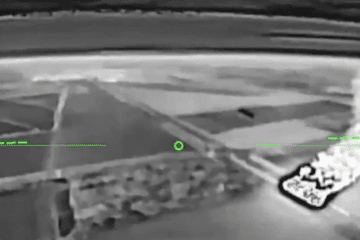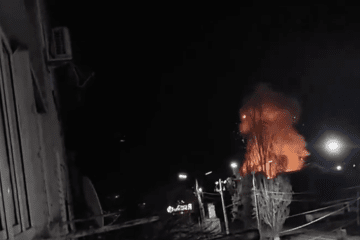- Category
- Latest news
NATO Selects AI and Drone Swarm Solutions That Effectively Counter Russian Glide Bombs
-4088b216cdd44496fb25103287756e14.jpg)
In early February, NATO’s Allied Command Transformation launched its 15th Innovation Challenge, seeking cutting-edge solutions to counter Russian UMPK glide bombs and other long-range aerial threats. The competition, which concluded recently, recognized three groundbreaking technologies that could help mitigate the impact of these devastating weapons, Defense Express reported on April 1.
The top three winners not only earned recognition but also secured support from NATO’s innovation ecosystem.
France’s Alta — Ares AI-Powered Bomb Detection
The French company Alta Ares took first place with an artificial intelligence (AI)-driven system designed to detect, identify, and predict the trajectory of Russian glide bombs. Originally developed for reconnaissance missions in Ukraine, the system was adapted to serve a critical early-warning function, helping forces take cover or activate electronic warfare (EW) systems to disrupt guidance mechanisms.
Germany’s Tytan Technology — Titan Interceptor Drone
German startup Tytan Technology secured second place with its Tytan anti-air drone, capable of intercepting and destroying glide bombs in midair. The drone, tested in Ukraine since December 2024, boasts a range of over 15 km, speeds exceeding 250 km/h, and a 1 kg explosive payload. It uses machine vision technology for target acquisition, making it a cost-effective defense solution.
France’s Atreyd — Drone Swarm Defense
Another French startup, Atreyd, claimed third place with a suicide drone swarm concept designed to form a “drone wall” capable of intercepting glide bombs mid-flight. The system employs ultrasound-based detection and guidance to improve targeting accuracy.
Out of 40 competing proposals, 13 advanced to the final round, including a surprise contender—Ukraine’s Night Watch team.
While NATO had not announced the participation of non-member states, Night Watch emerged as a finalist. The team is publicly known for its Lima electronic warfare system, which specifically targets Russian UMPK bombs by disrupting their satellite navigation.
-6e03694a933538fd30274c6783fb63cf.png)
According to Admiral Pierre Vandier, head of NATO’s Allied Command Transformation, Ukraine played a key role in evaluating the finalists, with a Ukrainian frontline military officer serving on the judging panel. The three winning solutions were deemed highly relevant to Ukraine’s current battlefield needs.
The competition highlighted a growing trend toward drone-based defenses, with some systems capable of controlling up to 200 drones simultaneously at minimal cost.
Several proposals also focused on electronic warfare as a key countermeasure, leveraging AI-driven jamming systems to disrupt the navigation of Russian glide bombs.
One unexpected entry involved microwave energy weapons designed to disable enemy electronics. However, no laser-based systems were presented, suggesting that laser weapon deployment remains unrealistic in the short term.
Admiral Vandier also announced the next NATO Innovation Challenge, set for June 2025, which will focus on countering fiber-optic-controlled drones—a rapidly emerging battlefield threat.
Earlier, reports emerged that Russia’s glide bomb campaign was rapidly losing effectiveness as Ukraine’s electronic warfare units jammed satellite guidance along the front line.



-111f0e5095e02c02446ffed57bfb0ab1.jpeg)


